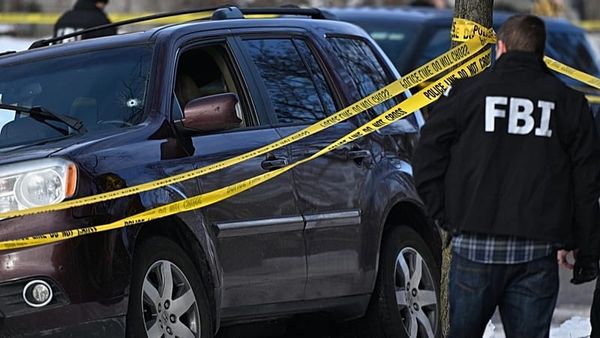
When I was a child, my parents attended an annual oyster roast whose centerpiece was a woman known as the Uniroyal Gal, a 17ft tall fiberglass woman in a low-slung blue bikini, modeled after Jacqueline Kennedy. Road trips took us through the land of Vollis Simpson’s Whirligig Park, Muffler Men, Marvin Johnson’s Gourd Collection and signs for General Stonewall Jackson’s left arm, buried separately from his body after an amputation in rural Virginia.
I wrongly assumed that Roadside Americana was only a fixture of southern roadsides. Now, I take joy in noticing it on my weekly commute north on Route 7 in Vermont.
I often hit the road at 7am on my teaching days in order to reach Middlebury College by 9 for office hours and class. Much of Route 7 is blessedly tree-lined, and Vermont’s weather is frequently unforgiving, so the levity of Roadside Americana breaks up the monotony of my drive.
Thirty minutes into my route, I pass a historic fountain in Wallingford known as The Boy and the Boot, where a boy pours water from a boot in hand. In Rutland, a collection of 20ft-tall scrap metal robot sculptures designates the entrance to Mac Steel; the collection seems to grow year after year. As I enter the town of Brandon, my eye always lands on an impossibly tiny compact car painted in camouflage, with two guns fixed to the roof.
But the real star of the long commute is Queen Connie – a massive female gorilla made out of steel-reinforced concrete. Connie holds up a vintage yellow Volkswagen Beetle with one arm. I’m a visual navigator, and when I see Connie, I know that I’m almost done with my commute.
Recently, I explained the Americana aesthetic to my daughters, asking them to think about objects that relate to something quintessentially American, or folklore. “It’s often playful or nostalgic,” I said. “Or even problematic. You know it when you see it.”
“That’s not helpful,” my daughter offered, but soon she was pointing out old signs of giant ice-cream cones and a huge metal shopping cart with an engine en route to the Albany airport. I mentioned that the World’s Tallest Ladder Back Chair used to be located a few miles south of our farm.
The website Roadside America offers tips on where to find smiley-faced water towers, alien autopsy exhibits in Roswell, and the grave of an enthusiastic square dancer in Alabama who insisted on being buried while wearing his dancing shoes – in his bed.
In my home state of North Carolina, the Roadside America map features the World’s Largest Chest of Drawers, the World’s Largest 10 Commandments, a pair of enormous concrete legs and a “talking robot cow” at the Billy Graham Museum Library. Elsewhere in Vermont, one can find a jet on a stick, an enormous jug of maple syrup and a chapel dedicated to dogs.
I love Roadside Americana because it isn’t necessary. It’s often whimsical, compulsive, or the product of some human’s offbeat – but strong – vision. When Susan Sontag wrote her Notes on Camp in 1964, she remarked on its “love of the unnatural: of artifice and exaggeration”. She also mentioned being “strongly drawn” to camp, and “almost as strongly offended by it”.
Americana is not exclusively of the camp aesthetic, though there is overlap – but Sontag’s notion of being simultaneously repulsed and drawn to an aesthetic resonates with me. But largely – problematic examples aside – I rejoice in Americana and public roadside art. For me, Roadside Americana is often a physical manifestation of joy for the sake of joy, art for the sake of art. It is often, at its core, an example of outsider art created outside of the urban sphere, outside of the academy and often outside of a capitalistic mindset. It’s largely democratic and unpretentious. Sometimes it feels like the artist just couldn’t help themselves; they had to stack filing cabinets or assemble a 160ft wooden dinosaur out of found wood.
When I see Roadside Americana, I feel deep anthropological intrigue and want to know more. Whose vision was this? Why did a group of people agree on a full Christian burial for a single arm? Why did Ricky Pearce spend hours creating concrete legs spread in an obscene position, and later, a pair of enormous concrete high heels? Why did a Corvette repairman in rural North Carolina hoist a nude Tastee-Freez icon on to the roof of his shop? (Turns out it was because the former owner of the Tastee-Freez didn’t pay him for custom Cadillac limo work in the 1980s.)
If you are drawn to unusual stories and bold characters, and as a writer, I unabashedly am, Roadside Americana is like a signal flare. It often speaks to someone’s creative impulse, which to me, is almost universally honorable. The poet Jane Hirshfield once said that the act of writing poetry is to “flush from the deep thickets of the self some thought, feeling, comprehension, question, music you did not know was in you, or in the world”. I like to think Roadside Americana comes from a similar place – it pushes against the increasingly generic roadside landscape, and it defies the expected and known.







